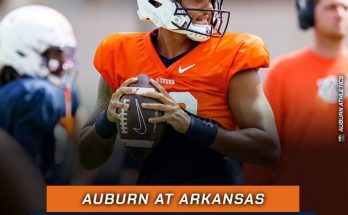Title: South Carolina and Oklahoma: Prone to Turnovers in Their Quest for the First SEC Victory
Introduction
In the world of college football, turnovers can make or break a game. The ability to protect the ball and take it away from your opponent is often a key indicator of success. In the case of South Carolina and Oklahoma, two teams with distinct histories and ambitions, turnovers have played a significant role in their performances as they compete for their first SEC victory.
South Carolina, a team that has seen steady improvement under Coach Shane Beamer, is working hard to establish itself as a competitive force in the Southeastern Conference (SEC). Similarly, Oklahoma, a powerhouse in college football for many years, is transitioning into the SEC and facing a new level of competition. Both teams, however, have struggled with turnovers, which has hindered their chances of victory in the early part of the season.
This article will explore the turnover issues faced by both teams, the impact of these turnovers on their performances, and the strategies they might employ to minimize mistakes as they compete for their first SEC victory. We’ll also delve into the significance of this matchup in the larger context of their seasons and conference standings.
South Carolina’s Struggles with Turnovers
The Impact of Turnovers on South Carolina’s Season
South Carolina’s football program has made significant strides in recent years under the leadership of Shane Beamer. However, one of the key issues plaguing the team has been its struggles with turnovers. In their quest to make an impact in the SEC, South Carolina has often found itself shooting itself in the foot by turning the ball over at inopportune times.
In the 2024 season, the Gamecocks have been inconsistent in ball security. Quarterbacks, running backs, and even wide receivers have been guilty of turning the ball over. For example, interceptions thrown by Spencer Rattler, South Carolina’s talented quarterback, have frequently put the defense in tough situations, leading to easy points for the opposing teams. While Rattler is known for his ability to make explosive plays, his turnover-prone nature has been a constant concern for the Gamecocks’ offense.
The impact of these turnovers cannot be overstated. In high-stakes games, especially in the competitive SEC environment, turnovers often result in quick momentum shifts and can be the difference between a win and a loss. South Carolina’s defense has been forced to spend extended periods on the field after turnovers, wearing down the unit and putting pressure on them to make big plays.
Causes of Turnovers for South Carolina
A deeper dive into South Carolina’s turnover issues reveals a few key factors:
- Inexperienced Offensive Line: One of the primary causes of turnovers for the Gamecocks has been an offensive line that has struggled to protect the quarterback and establish a consistent running game. The line’s inability to provide adequate protection has led to forced passes and bad decisions from Rattler, resulting in interceptions and sacks that could have been avoided.
- Quarterback Decision-Making: Spencer Rattler, while capable of making incredible plays, has occasionally displayed poor decision-making under pressure. His tendency to force throws into tight coverage or attempt to extend plays beyond the pocket has often led to turnovers.
- Ball Security Issues: South Carolina’s running backs, especially in early season games, have shown a tendency to fumble the football. The team has been working diligently to address ball security, but these mistakes continue to plague the offense, particularly in crucial situations.
Oklahoma’s Turnover Woes in Transition to the SEC
Oklahoma’s Identity and Turnover Problems
Oklahoma, historically a powerhouse in college football, is transitioning into the SEC, one of the toughest and most competitive conferences in the nation. Under head coach Brent Venables, the Sooners have seen a shift in philosophy, focusing more on defensive fundamentals and establishing a strong, balanced offense. However, turnovers have become a stumbling block for the Sooners, who have faced criticism for their inability to protect the football during high-pressure moments.
Oklahoma’s offense, led by a capable quarterback and talented skill players, has been productive at times but often bogged down by turnovers. Whether it’s errant throws, dropped passes, or mishandled snaps, the Sooners have repeatedly given opponents opportunities to capitalize on their mistakes. As Oklahoma adapts to the SEC’s heightened level of competition, the margin for error has shrunk, and turnovers have become more costly.
Key Moments of Turnovers for Oklahoma
Much like South Carolina, Oklahoma has faced critical turnovers in close games that have altered the outcome. Against top-ranked opponents, Oklahoma’s mistakes have been magnified. A bad interception in the red zone, a fumble returned for a touchdown, or an untimely turnover on downs has led to missed opportunities for the Sooners to put points on the board.
The team’s defensive efforts, which have shown promise, are often undermined by the offense’s inability to protect the football. The lack of ball control has placed additional pressure on the defense to get stops in high-leverage situations, creating a cycle of frustration for both sides of the ball.
Reasons for Oklahoma’s Turnover Issues
Several factors contribute to Oklahoma’s turnover struggles:
- Quarterback Play: The Sooners’ quarterback, while talented, has sometimes struggled with accuracy and decision-making, particularly when facing high-pressure defenses. Mistakes such as forcing passes into double coverage or under-throwing balls have led to interceptions.
- Lack of Discipline: Turnovers are often the result of a lack of discipline, whether it’s in the form of mental mistakes or lackluster execution. Oklahoma’s offense has occasionally shown a tendency to make careless mistakes, especially when the game is on the line.
- Adjusting to the SEC: The SEC is a conference known for its suffocating defenses and fast-paced, high-pressure environments. Oklahoma is still adjusting to the intensity of SEC football, and turnovers have been a natural consequence of this transition. Defensive schemes are more complex, and the speed of the game is faster, forcing the Sooners to adapt their offensive strategies.
The Importance of Turnovers in the South Carolina vs. Oklahoma Matchup
As South Carolina and Oklahoma square off in this pivotal SEC matchup, turnovers will likely play a key role in determining the outcome. Both teams are still working to establish their identity in the SEC, and a victory would be crucial for building momentum in their respective seasons.
For South Carolina, a win would not only mark their first SEC victory of the season but also demonstrate that they have the resilience and discipline to overcome their turnover issues. The Gamecocks will need to focus on ball security, limiting mistakes, and capitalizing on any turnovers they force on defense. With a balanced approach, they can take advantage of Oklahoma’s occasional lapses in ball protection.
For Oklahoma, the stakes are equally high. The Sooners need to show that they can thrive in the SEC environment, and that includes cutting down on turnovers. To defeat a disciplined team like South Carolina, Oklahoma must minimize mistakes and execute their offense efficiently. Venables and the Sooners’ coaching staff will likely stress the importance of making smart decisions, particularly in high-pressure situations.
Strategies for Minimizing Turnovers
Both South Carolina and Oklahoma must adopt specific strategies to reduce turnovers in this crucial game.
For South Carolina:
- Improved Offensive Line Play: The Gamecocks’ offensive line must give Spencer Rattler enough time to read the defense and make accurate throws. By creating a more stable pocket, the Gamecocks can help reduce forced interceptions.
- Ball Security Drills: South Carolina’s coaching staff should focus on ball security drills, especially for running backs, to minimize fumbles. Protecting the football will be a priority in ensuring the Gamecocks can capitalize on scoring opportunities.
- Quarterback Discipline: Rattler needs to be more disciplined in his decision-making, avoiding risky throws and taking what the defense gives him. Patience and poise will be key in avoiding turnovers.
For Oklahoma:
- Quarterback Decision-Making: Oklahoma’s quarterback must be more cautious and avoid making high-risk throws. Limiting interceptions will be crucial for sustaining drives and putting points on the board.
- Focus on Fundamentals: Venables must ensure that his players focus on the fundamentals of ball control, especially in high-pressure moments. The Sooners cannot afford to make mental errors in crucial situations.
- Defensive Takeaways: Oklahoma’s defense should look for opportunities to create turnovers, especially through forced fumbles and interceptions. Getting extra possessions will be vital to swinging momentum in their favor.
Conclusion
As South Carolina and Oklahoma compete for their first SEC victory, turnovers will undoubtedly be a focal point of the game. Both teams have shown that they are capable of explosive plays, but their ability to protect the football and capitalize on forced turnovers will likely determine the outcome. For South Carolina, improving ball security and minimizing mistakes will be key to securing a crucial win, while Oklahoma must overcome its turnover woes to demonstrate that it can compete at the highest level in the SEC.
The matchup between these two teams is a significant one in the context of their respective seasons. With each side looking to gain momentum, the battle for ball security will be one of the most important aspects to watch as the Gamecocks and Sooners clash on the field. Ultimately, the team that can limit its mistakes and capitalize on its opportunities will come out on top, making turnovers the key factor in determining the winner.



